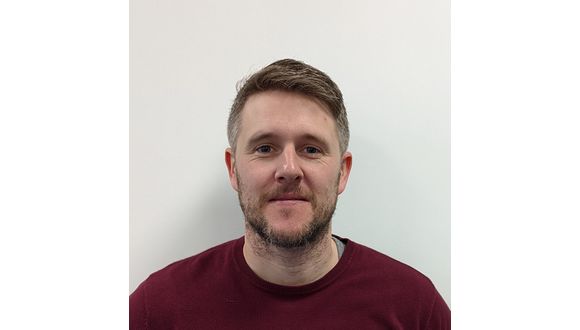Thu, 03 March, 2022
TWI has been working on a project alongside GMI Aero SAS and Brunel University London to investigate non-destructive testing methods for determining the quality of adhesive bonds on composite materials used in the aerospace industry, with the aim of increasing confidence and uptake of these lightweight materials.
We spoke with TWI senior project leader, Paul Evans to find out more…

Can you start by explaining the benefits of using composites in industries such as aerospace?
Adhesive joints are increasingly used to join structural elements in aircraft as they offer less stress concentration and fewer fatigue problems than conventional techniques such as bolting, riveting or welding.
Owing to the advanced manufacturing of adhesively bonded parts, the composite/epoxy fibres can be oriented to match the direction of principal stress, which consequently increases the structural efficiency and outperforms most metal alloys. In addition, the flexibility in terms of manufacturing complex shapes, low-cost tooling and resistance to corrosion are some of the advantages of using bonded assemblies and composites. The great benefits of high specific strength and specific stiffness ratios for composites and bonded assemblies have led to its increased use in many demanding applications - notably in the aerospace industry. The use of composite materials in aircraft results in a reduction in fuel consumption and reduction of carbon emission per passenger by 20%, compared with traditional aircraft made using conventional materials operating at the same speed, which makes composites very attractive for the aerospace industry.
The SealedwithoUTaKiss (SWAK) project will give the EU aerospace industry a technological and competitive advantage in the growing “more lightweight” industry. The project scale, challenge, and depth of required technical skills demand the work to be pursued as a multi-actor industrial approach through a collaborative project, bringing together European expertise in aspects related to manufacturing, composites, adherence models, NDT, mechanical testing and validation expertise, etc.
Can you tell us more about kissing bonds, what are they and why can they be a problem?
Also known as a zero-volume dis-bond between adhesive and adherend, a kissing bond defect will show intimate solid-to-solid contact but the dis-bond has no tensile strength or volume at the interface between the adhesive and adherend. These factors make these dis-bonds difficult to detect using non-destructive means.
Kissing bond defects can be very dangerous as they compromise the joint strength and can occur during joint manufacture due to a poor preparation of the adherents.
Adhesive joints can be susceptible to environmental degradation and manufacturing defects, which creates a need to effectively inspect the joints.
What techniques have been investigated by the project team to test for kissing bonds and how effective have they been?
During this project, TWI and our partners have tested numerous techniques for the inspection of kissing bonds and we have seen very good results from the following techniques:
- Phased Array (PA) immersion inspection – This was able to detect contaminated areas successfully within the larger demonstration samples
- Thermography – Noted that contaminated samples heated a lot quicker than the samples with no contamination.
- Tomography – Areas of contamination within the smaller samples were detected
- Guided Wave and Laser Shock – Our partner, Brunel, had great success with detecting contaminated samples using both guided wave and laser shock techniques
Are there any additional benefits from this work?
The SWAK project will contribute to building the industrial leadership of Europe in aerospace manufacturing by offering verified NDT solution to enable zero-defect bonding of adhesively joined structures to be used in aircraft. Considering the benefits, it will reduce weight, fuel and power consumption, and cost. It will attract potential customers globally and will contribute to the economic competitiveness of involved EU companies by generating significant business and return on investment.
Finally, when can we hope to see an outcome from this work, and do you see it being useful for areas outside of aerospace?
The project ends in March 2022, when we have the partners coming to the UK to discuss final findings and what the overall plan is moving forward.
We should hopefully then see the validation of an NDT system for analysing bonded structure assemblies’ structural features, performance and also identify defects - specifically kissing bond defects - along with NDT procedures.
The SWAK project has received funding from the EU Clean Sky initiative under Grant No 831882